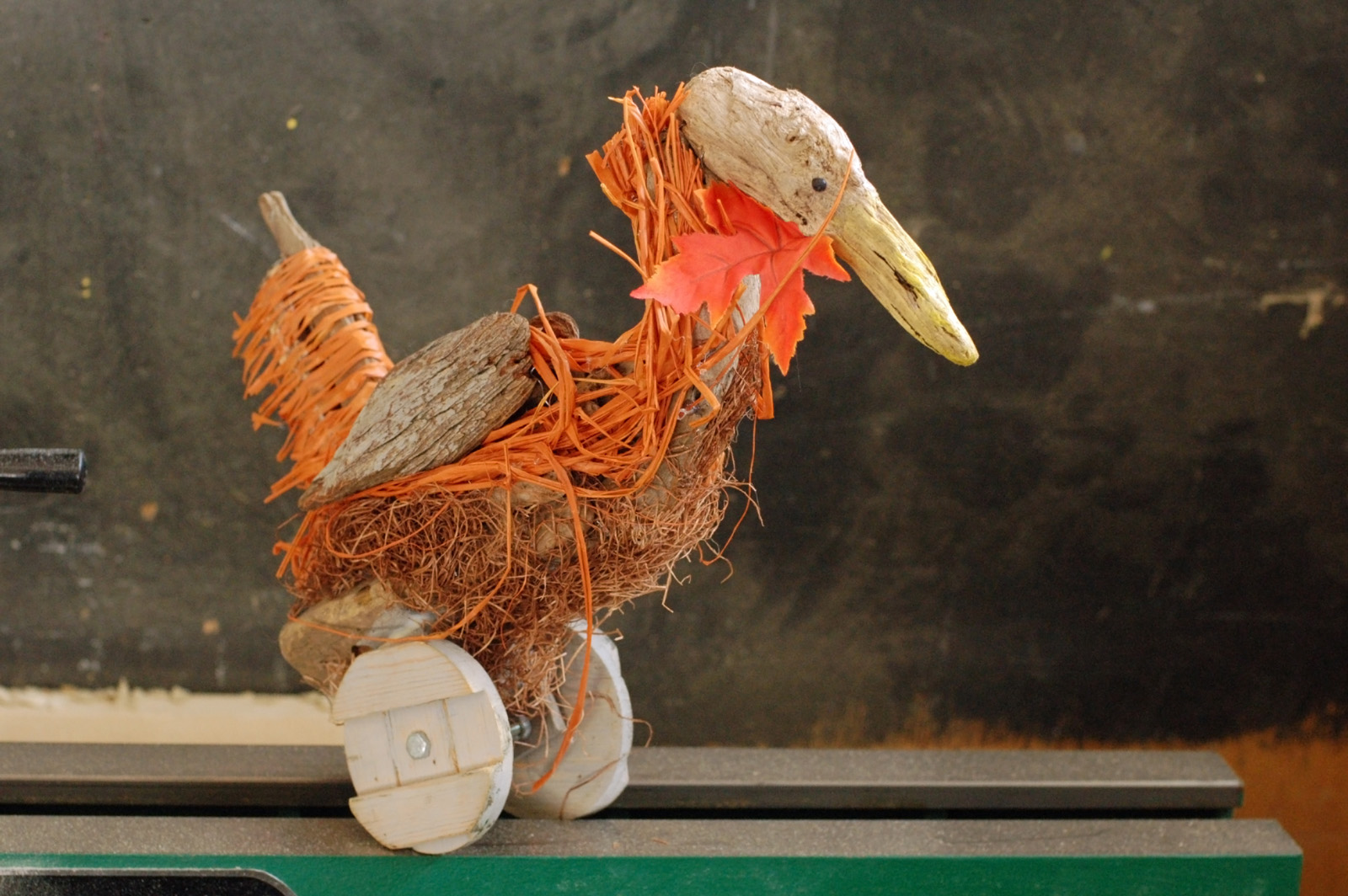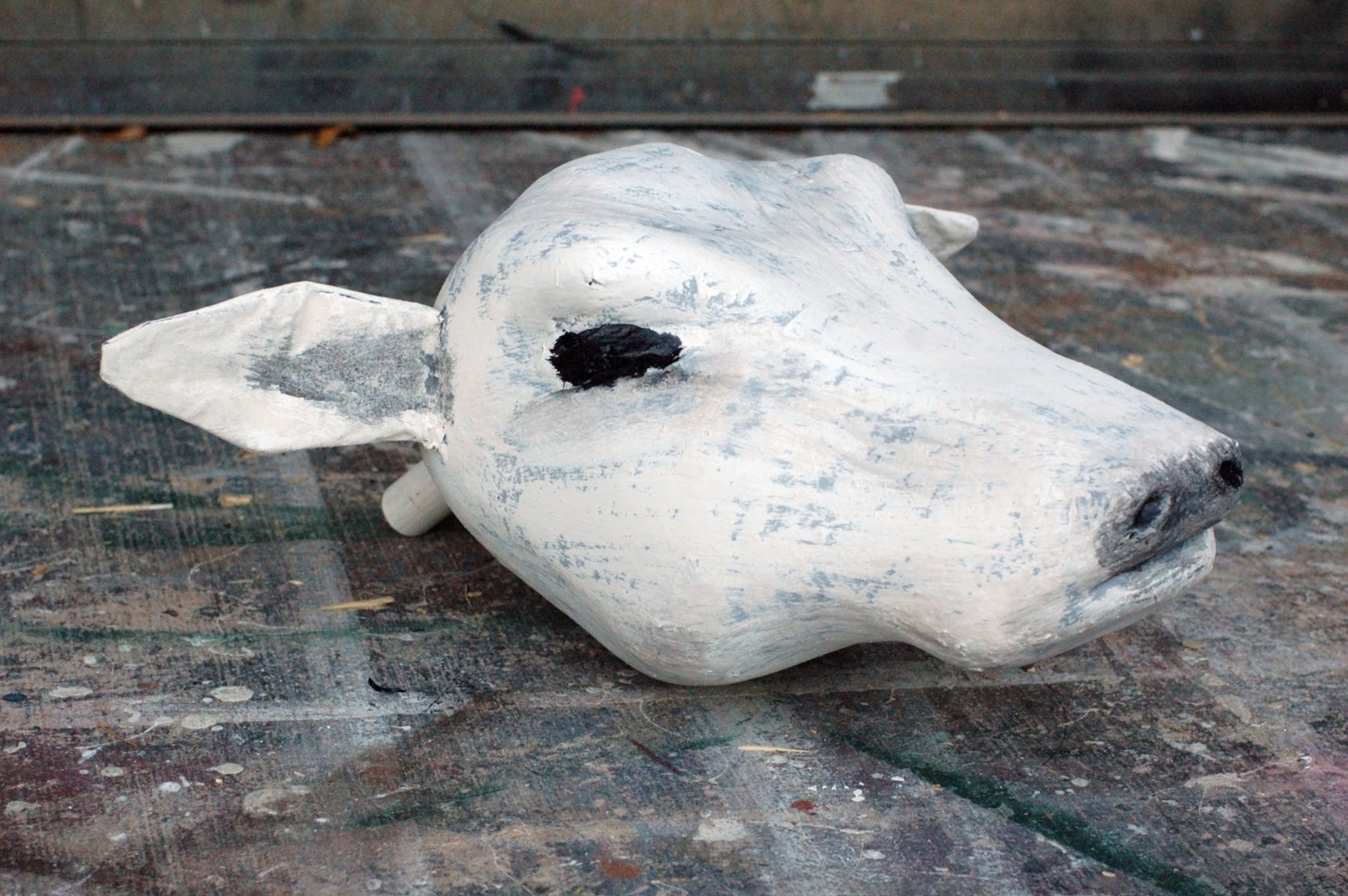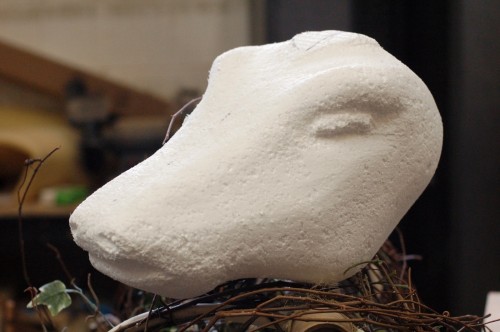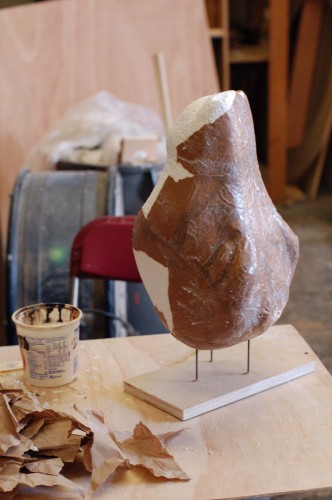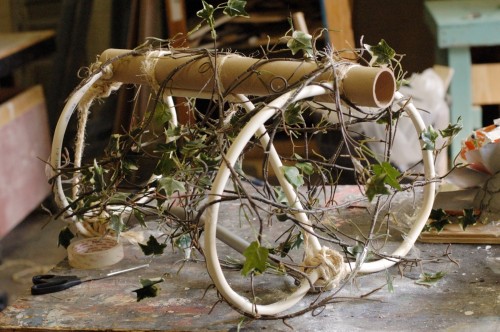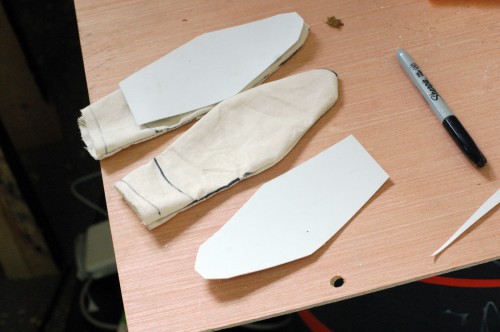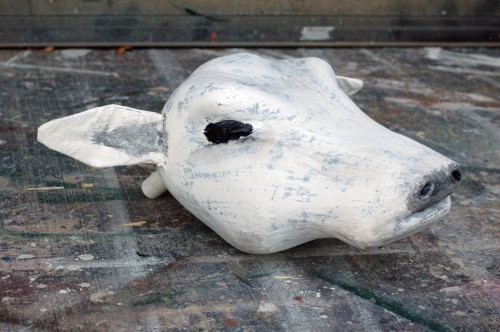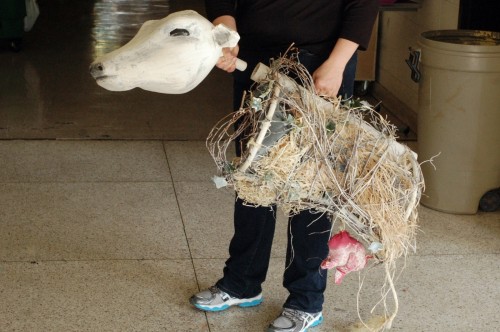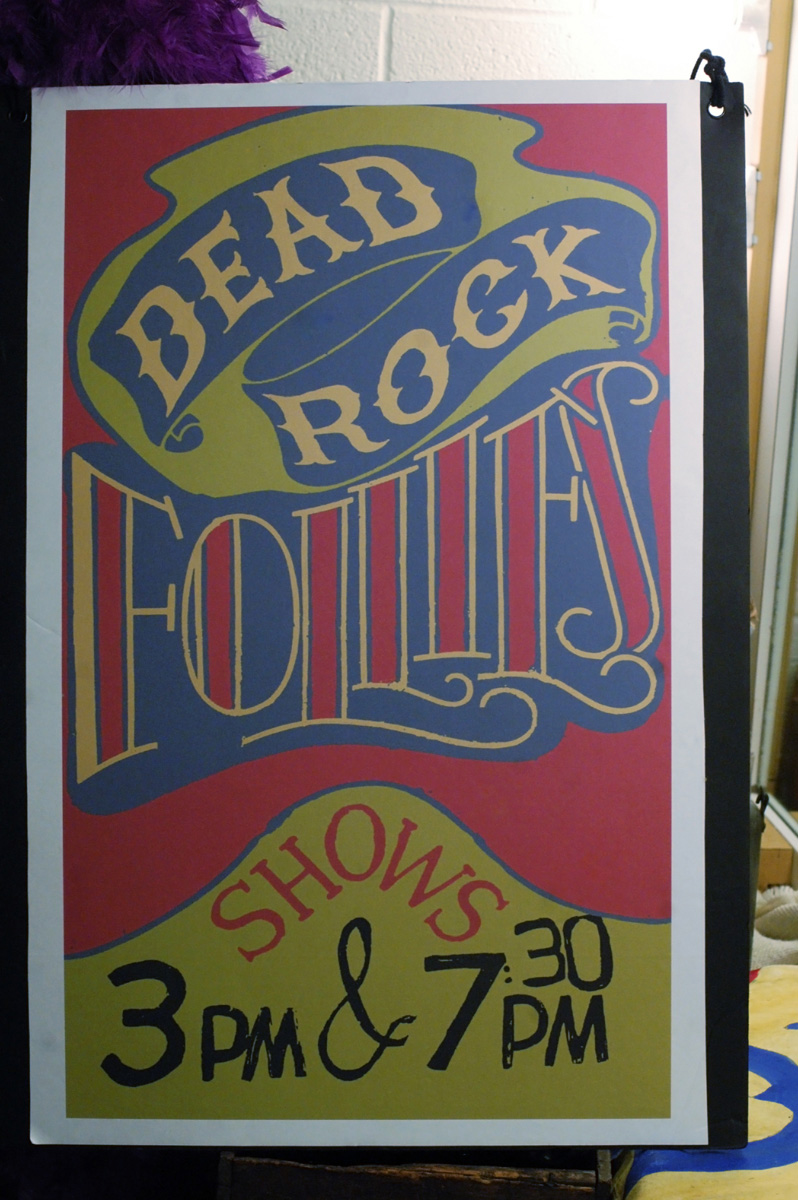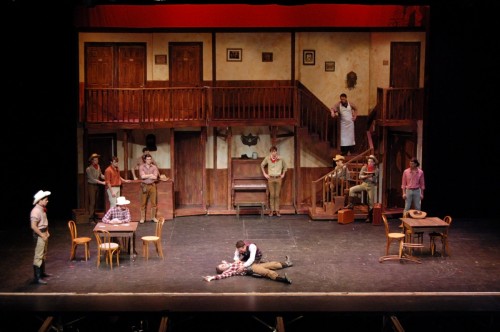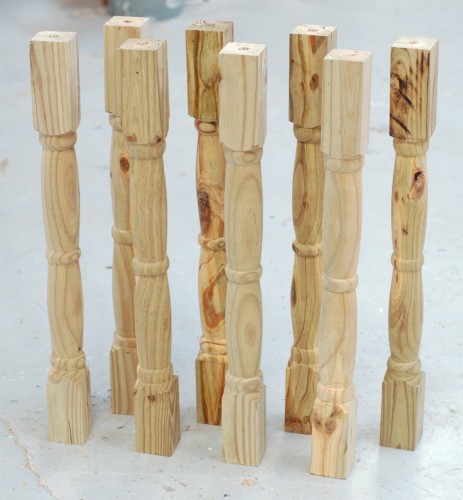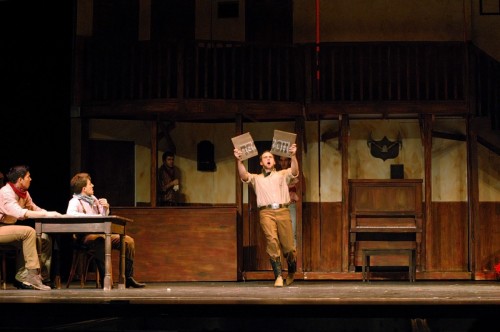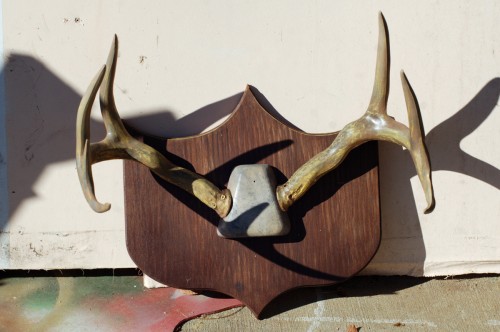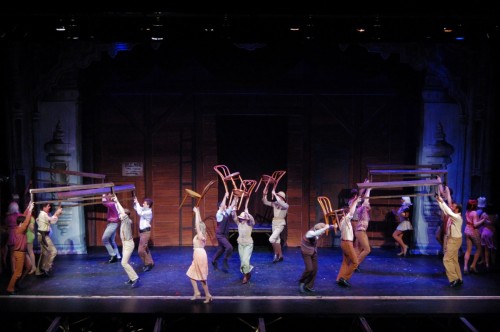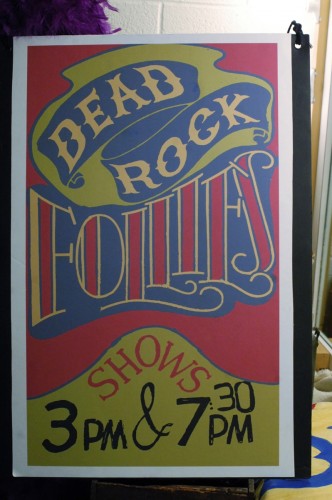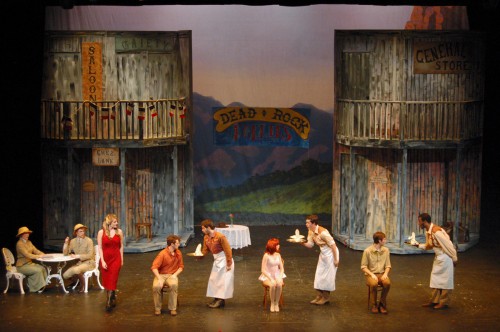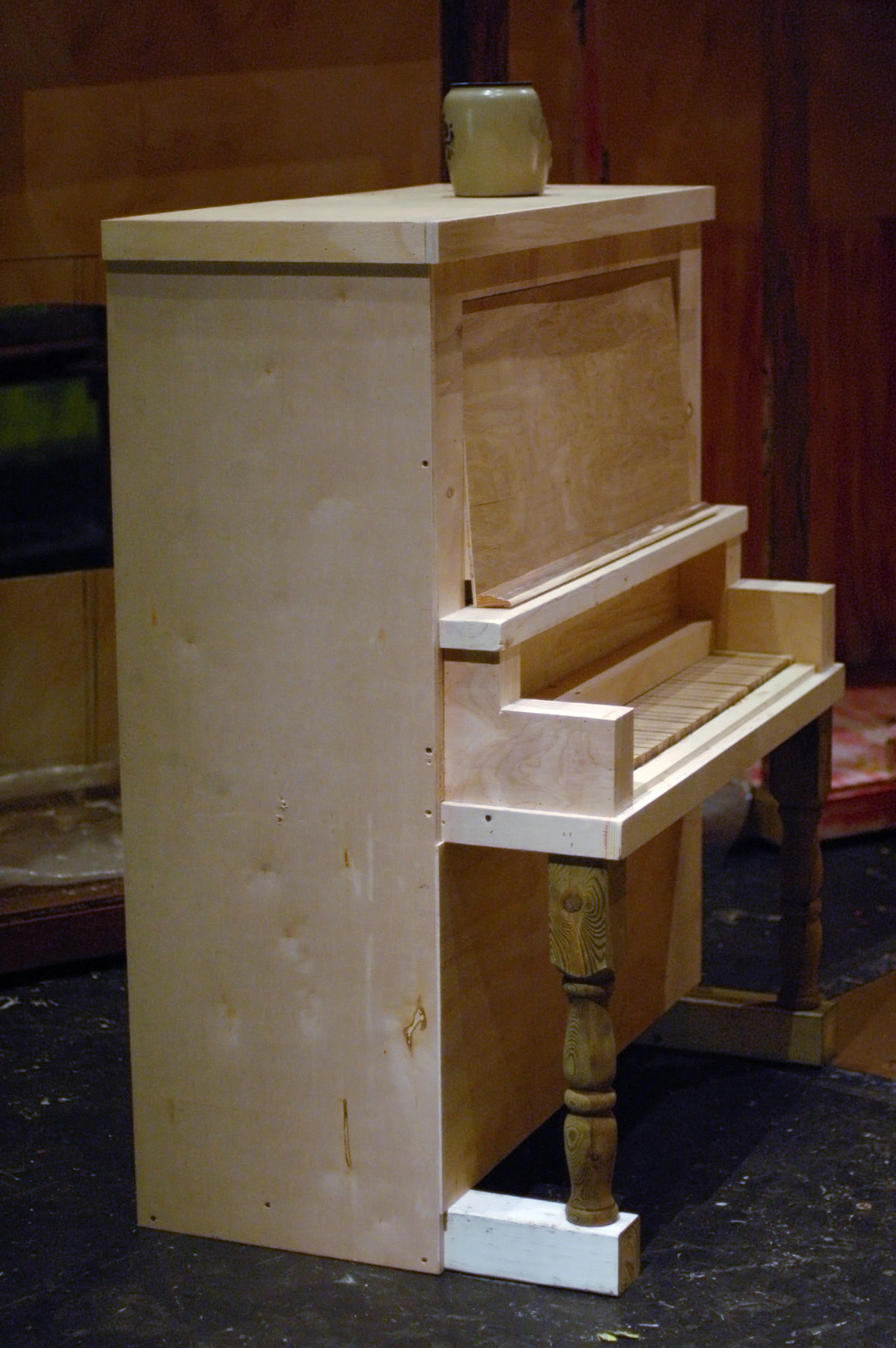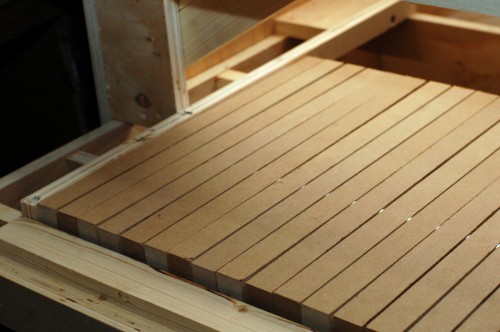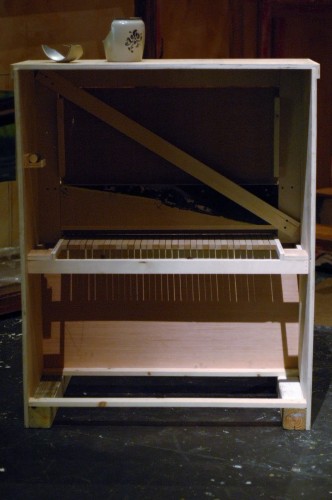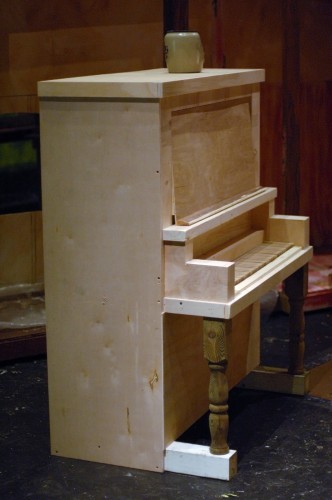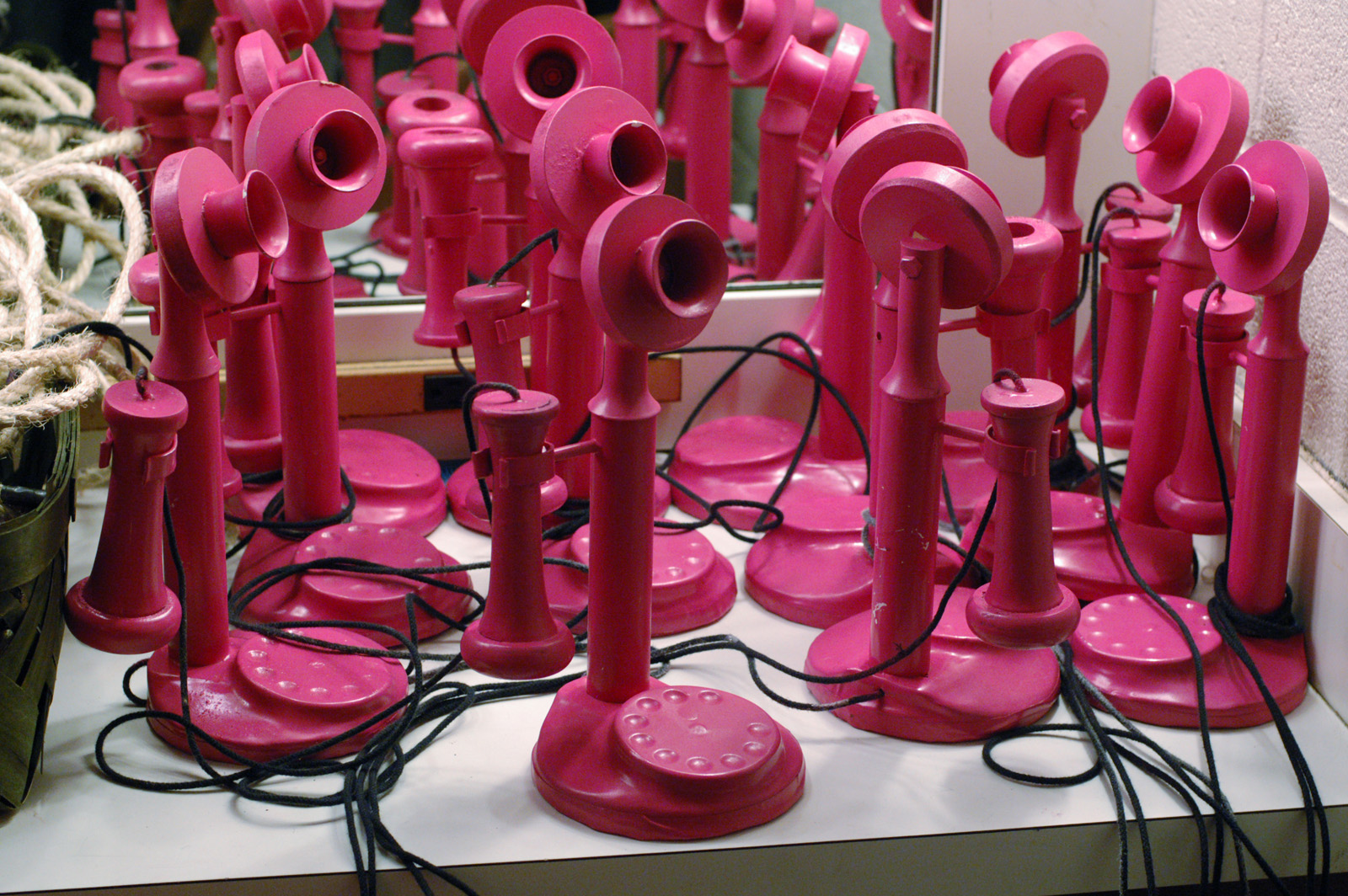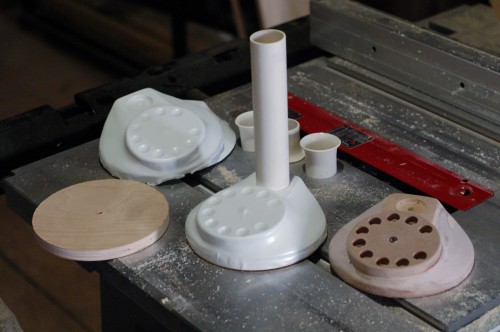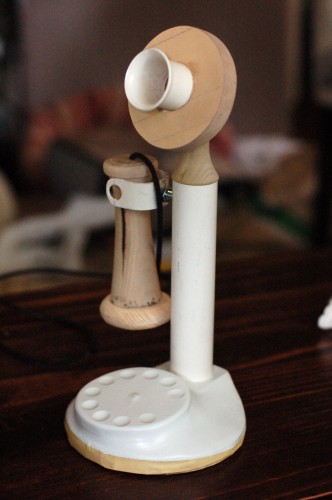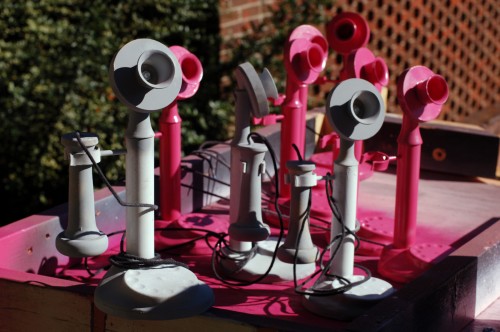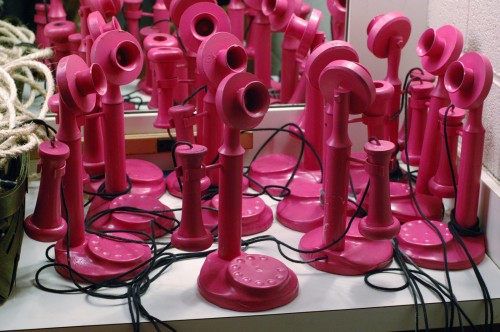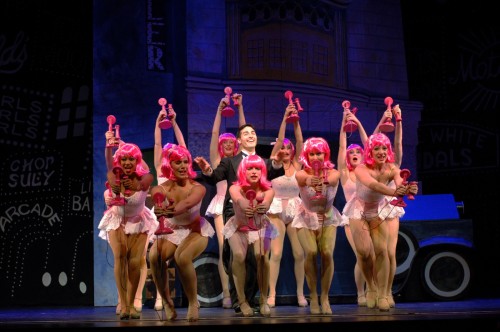In my last post, I detailed the build of a “Milky-White” puppet for Into the Woods. I made some smaller puppets for that production as well, including two birds and the hen that lays golden eggs.
For the birds, I began experimenting with various ways with how they could be carried and flap their wings. The production team liked one where the bird was held aloft on a pole, and their wings flapped by moving a piece of PVC pipe up and down over the pole. Bamboo lashed with twine created the mechanism, and more twine was used as the “hinge” to connect the wings to the body.
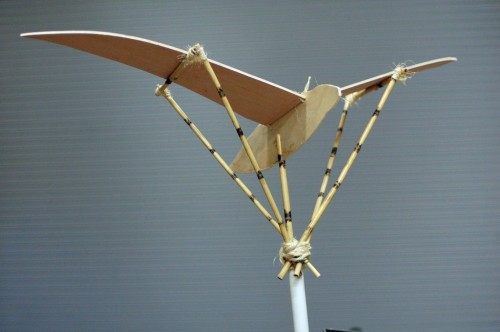
I covered the wings with leaves to continue with the concept of using “natural” materials to create the puppets. If you remember from the last post, the goal was not to make realistic animals, but to make items that appeared distinctly hand made from materials one might find in a forest.
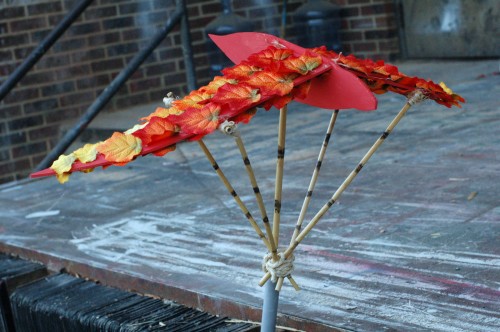
I brainstormed awhile on the hen, trying to come up with a look that was interesting and distinct from the other puppets. The designers had provided me with some research of horse sculptures constructed of driftwood, so I decided to have a go at a driftwood hen.
I began with a full-scale reference sketch of a hen, and began mixing and matching pieces of driftwood until I got an assemblage that looked like a hen. I drilled tiny holes in the pieces so I could wire them together (later reinforcing some of the joints with hot glue).
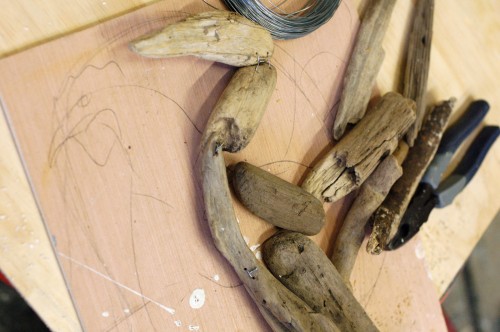
The director wanted the hen to be on “wheels” and pushed out with a stick. The stick is later removed and the hen is carried around. I built some rustic-looking wheels, and drilled a hole in the back so a stick could be added and removed. He also got some small eyes glued on.
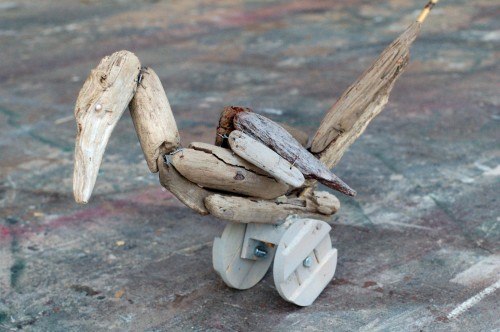
After a few rehearsals, the team wanted a hen with some more presence on stage. I added some bright orange raffia along the top, some brown moss along the bottom, and a bright orange leaf for a wattle. I also painted the eye black and the beak yellow to help distinguish the parts a bit better.
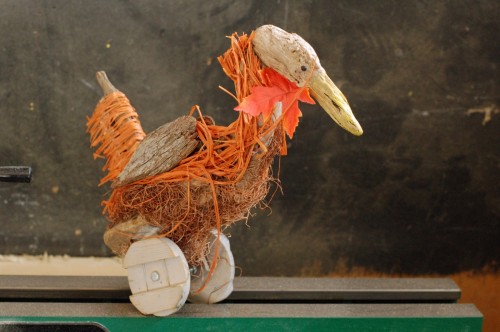
Overall, it was a fun challenge to build “puppets”, since I’ve worked with them a lot in the past, but never had the chance to build my own. It was also interesting to work with various materials I’ve never worked with before.

